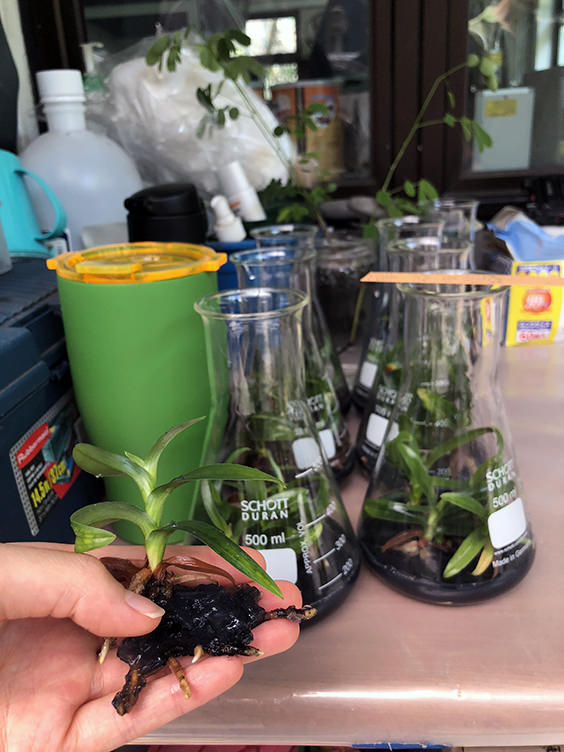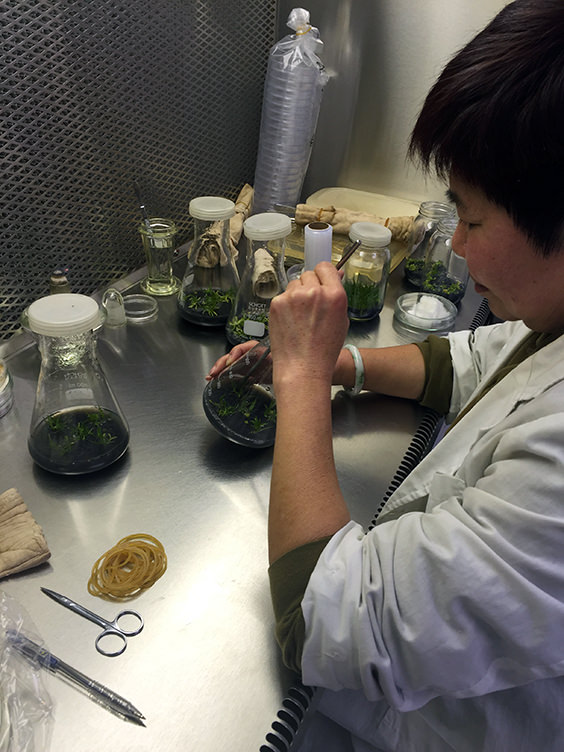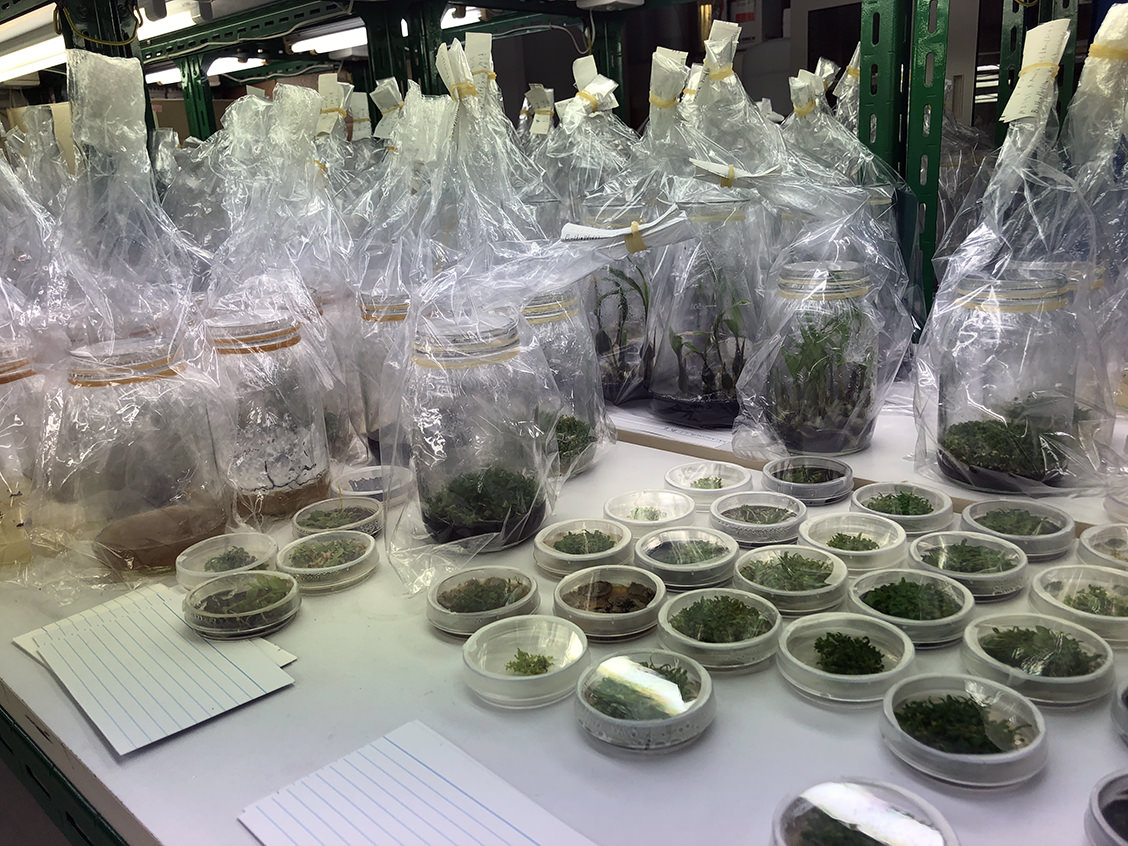
Micropropagation is a lab-based approach to producing large numbers of plantlets of species that would otherwise be difficult to consistently propagate in a nursery in such quantities. Some techniques make use of green tissue removed from a selected mother plant that is then exposed to various plant hormones and nutrients to promote growth, followed by a multiplication stage that involves dividing the resulting growing tissue into many smaller ‘explants’ for onward development. However, this approach typically generates plantlets that are clones of the mother plant, something that is not desirable in a conservation context, because long-term species survival depends on the generation of genetic diversity, not the reduction of it.


At KFBG, we use micropropagation techniques that maximise genetic diversity by propagating from seed. Orchids are particularly suitable for propagating in this way, because a single orchid capsule contains thousands of seeds that tend to exhibit multiple barriers to germination under normal, outdoor conditions. Micropropagation from seed offers the potential for large-scale orchid production and helps overcome these barriers by providing all necessary micronutrients in a controlled environment. Moreover, KFBG regards orchids as a priority for conservation.
Orchid micropropagation begins with the collection of a seed capsule harvested from a hand-pollinated plant in our nursery or from an open-pollinated plant in the wild. The capsule is brought to our micropropagation laboratory, carefully cut open and the tiny seeds it contains are inspected under a microscope to check their viability. If healthy, a few hundred seeds are spread over the surface of a specially formulated, enriched agar medium in a glass flask. The flasks are then sealed and incubated in our culture room. All of these procedures are conducted under sterile conditions.

Depending on the species, germination and development into seedlings may take months or even years. During this process, the young plants are transferred to fresh medium two or three times to provide them with additional space and nutrients. Once they are large enough, with their own differentiated leaves, stems and roots, the plants are ‘deflasked’ and transferred to the nursery. Every year, KFBG’s micropropagation lab produces over 10,000 seedlings representing more than 100 different rare and threatened orchid species in this way. These plants are maintained in our collections as an assurance against extinction in the wild, and they are used for horticulture, research and education. Some are planted back into the wild.
